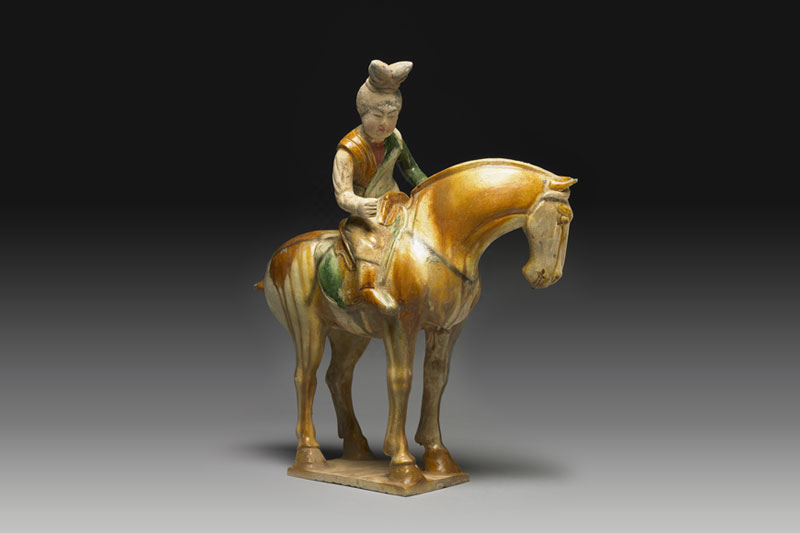Neolithic Age to Five dynasties
In the late Neolithic Age, various regions produced an assortment of ceramics, displaying the dynamic spirit of these early peoples. For example, the Yangshao culture, located at the upper reaches of the Yellow River, produced pottery painted with geometric patterns in bright colors such as red, black, and white, while in the lower reaches, the Longshan culture featured lustrous, black pottery characterized by its thin, eggshell-like form. The Dawenkou culture also manufactured very fine and meticulous white colored pottery. Through these examples, it is clear that the knowledge for selecting materials and the techniques for shaping forms and kiln firing were advanced, allowing for the development of diverse aesthetic ideas.
Pottery also played an important role in Chinese burial customs, which involved serving the deceased as if they were still alive. Using clay, craftsmen recreated scenes from life. Figurines, in the form of musicians, servants, officials, domestic animals, and buildings reflect the social conditions of ancient civilizations and the contemporary aesthetics. The surface of the pottery was often decorated with a coat of low-fired glaze. In the Han dynasty, archaic and solemn green and brown glazes were much loved. During the Tang dynasty, yellow, green, and brown glazes were applied to a single surface, creating a colorful and free style that became known as the Tang sancai, literally, the tri-colored glaze of the Tang dynasty.
Glazed high-fired porcelain first appeared in the Shang dynasty. By the late Spring and Autumn period, ritual and ceremonial wares with evenly applied green glaze developed in the Zhejiang area. However, large-scale production of porcelain did not begin until the Three Kingdom period and the Jin dynasties. As porcelain became associated with refined tastes and grew in popularity among high-ranking officials, ci, the Chinese character for porcelain, began to appear in poetries and essays.
After the Sui and Tang dynasties, the spread of kiln firing technique allowed for porcelain to become available to both the rich and the poor. Amongst the most popular were the green wares of the Yue kilns in the South and the white wares of the Xing kilns in the North. Furthermore, Ding ware and Changsha ware were exported in large quantities, reaching as far as Egypt and Mesopotamia.








